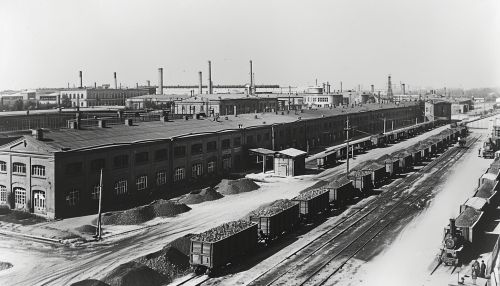First Five Year Plan
Introduction
The First Five-Year Plan was a set of economic goals, created by General Secretary Joseph Stalin and based on his policy of Socialism in One Country. It was implemented between 1928 and 1932. The plan was a component of the larger Soviet economic plan that spanned the 1920s to the 1950s to industrialize and modernize the Soviet Union.


Background
The First Five-Year Plan came into being because of the Soviet Union's desire to rapidly industrialize its economy. The Soviet Union, under the leadership of Joseph Stalin, believed that a strong industrial base was the key to national strength. The plan was developed by the State Planning Committee (Gosplan) to facilitate rapid industrialization and to transform the Soviet Union from a peasant society into an industrial powerhouse.
Objectives
The primary objective of the First Five-Year Plan was to industrialize the Soviet Union as quickly as possible. This involved a massive increase in the production of heavy industry, including steel, coal, and machinery. The plan also aimed to collectivize agriculture, which meant consolidating individual peasant farms into large, state-controlled enterprises. This was intended to increase agricultural output and free up labor for the industrial sector.
Implementation
The implementation of the First Five-Year Plan was marked by a strong emphasis on heavy industry. Large amounts of resources were allocated to the construction of new factories, plants, and infrastructure. The plan also involved a significant amount of labor mobilization, with millions of people being moved to work in the industrial sector.
The collectivization of agriculture was another major aspect of the plan's implementation. This involved the forced consolidation of individual peasant farms into large, state-controlled collective farms. The process was often violent and met with significant resistance from the peasantry.
Impact
The First Five-Year Plan had a profound impact on the Soviet Union. On one hand, it achieved its goal of rapidly industrializing the country. The production of key industrial goods increased dramatically, and the Soviet Union was transformed from a primarily agrarian society into a major world industrial power.
On the other hand, the plan also had significant negative effects. The forced collectivization of agriculture led to widespread famine, particularly in the Ukraine, where millions of people died in what is now known as the Holodomor. The plan also led to a significant increase in political repression, as the Soviet government sought to quell opposition to its policies.
Legacy
The legacy of the First Five-Year Plan is complex. It played a key role in transforming the Soviet Union into a major world industrial power. However, the human cost of the plan was enormous, with millions of people dying as a result of famine and political repression. The plan also set the stage for the subsequent Five-Year Plans, which continued the Soviet Union's policy of rapid industrialization and collectivization.
